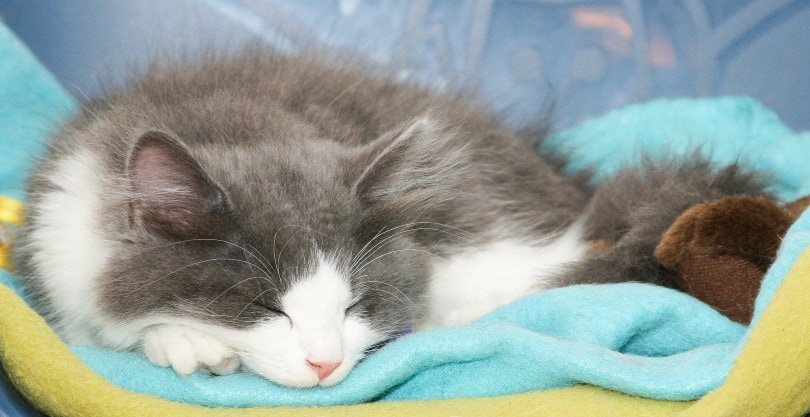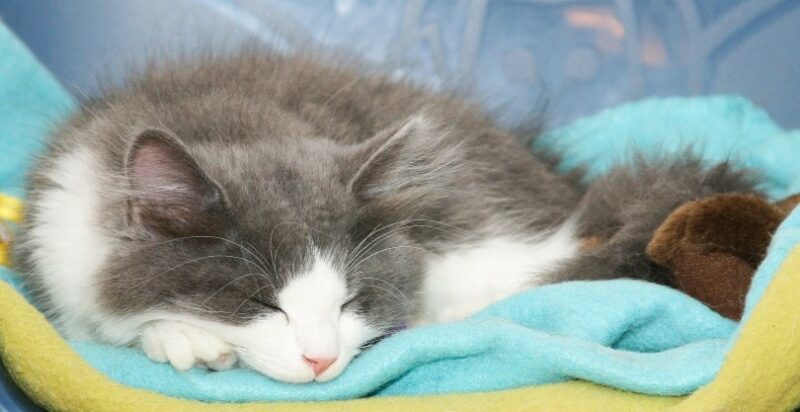Weighted blankets are a popular bedding option. Many people use them to reduce anxiety and sleep better. But is it advisable to have one if you share a bed with your furry friend?
No. Weighted blankets are unsafe for cats, and you shouldn’t consider buying one if you share your bed with your fellow feline.
But if you already have one, don’t fret. We discuss the dangers the blankets might pose for your feline below and offer tips on averting them. Read on to learn more.
How Weighted Blankets Work
If the therapeutic blanket shouldn’t weigh more than 10% of your body weight, then even the lightest option would be too heavy for your feline. In fact, weighted blankets are considered dangerous for children as well 2.
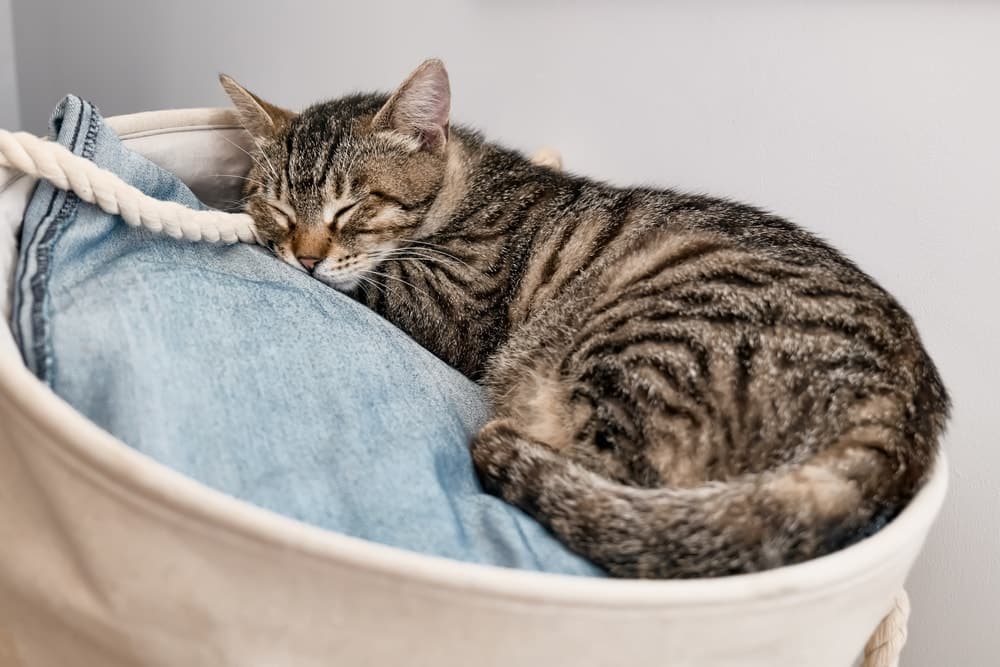
How Weighted Blankets Risk Your Cat’s Safety
Imagine a cat curled under a blanket over ten times their weight. The feline might struggle to crawl out, and the poor animal could panic and get stressed. In a worst-case scenario, your cat might suffocate.
The danger is worse if your cat has an underlying respiratory condition. The crushing weight can cause respiratory distress.
Weighted blankets don’t just harm felines who sleep under them. Your cat might chew on the blanket and choke on the strings of the blanket. The string may also cause an obstruction along their digestive tract, needing expensive surgery. The “fillings” in the blanket used to add weight are a choking hazard, too; the beads, pellets, glass, and metal fillings are all dangerous if swallowed.
Why Do Cats Love Blankets?
If you are a kitty owner, you must have occasionally seen your feline tucking themself into your blanket. But what is it about blankets that cats find irresistible? Do they love them the same way that humans do? Knowing the answer to that question can give you essential insight if you intend to keep your cat away from your weighted blanket.
There are several reasons why cats love snuggling under a blanket. They include the following:
1. Comfort
Cats love comfort. And nothing spells cozy like sleeping under a blanket. Your standard bed cover will be soothing to the cat like a weighted blanket gives you comfort.
Kitties also like spending quality time with their owners. So, it is also possible that sleeping under a blanket is comforting for the cat because they are close to you when they do so.
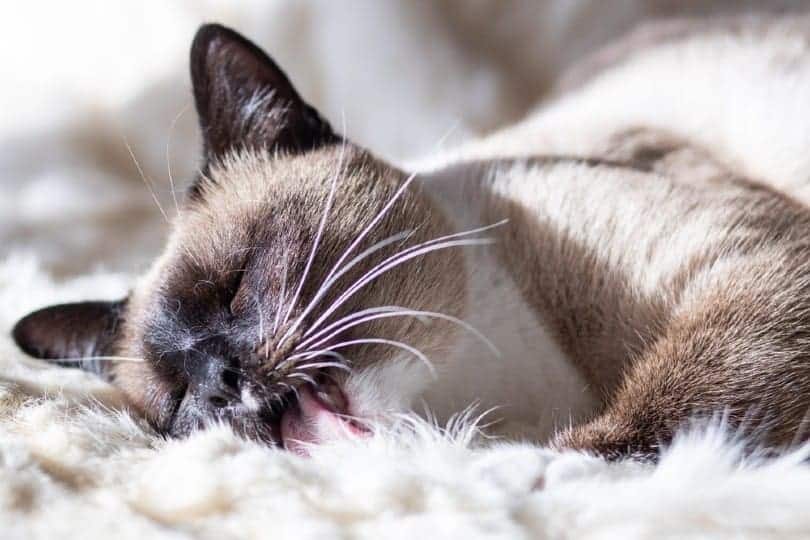
2. Warmth
Felines are also attracted to blankets because of the warmth. As you may have noticed, they love the heat. It is one of the reasons they love cuddling with you. They love curling up in warm places to conserve body heat while they rest.
3. Security
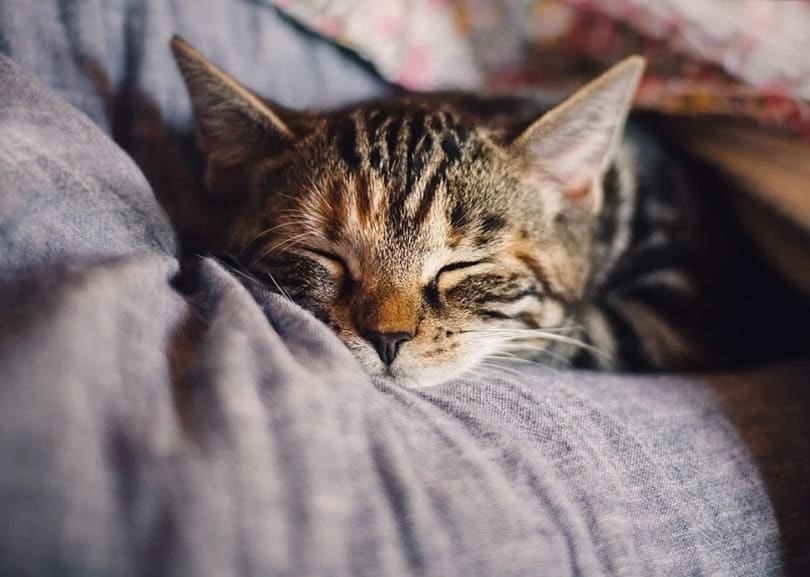
4. Scent
Scent can also explain a cat’s obsession with a particular blanket. It can either be your feline’s scent or yours. Cats leave their scent on objects and people by rubbing them with their paws, forehead, or cheeks to mark their territory. So, your cat may like one blanket because they have marked it as their own.
Cats will also recognize your scent on your bed. Although that alone may not alleviate stress, it can still provide comfort.
How to Keep Your Cat Safe
We don’t expect you to get rid of your therapeutic blanket entirely. However, there are a few measures you can take to keep your kitty safe. If you can’t keep the cat off your bed, ensure they sleep on the blanket and not under it. Otherwise, the weight would be too much for your cat to bear.
Also, don’t risk leaving your cat alone on the bed or in your room when you’re not around. If you’re walking out, keep your bedroom door closed.
Does your cat like biting items around the house? Setting aside enough time for play is advisable, where that energy can be better spent. Also, consulting with your veterinarian or a cat trainer or behavior specialist is recommended for cats that appear destructive towards your furniture or blanket.
Finally, you can discourage your feline from snuggling in your bed by buying them their own bed. Many cat beds on the market can offer the comfort, warmth, and security that your cat craves.
Final Thoughts
In summary, weighted blankets are not safe for cats. Besides the possibility of getting trapped, cats with underlying health issues, like respiratory infections, risk worsening their condition.
It is advisable to take caution if you own a weighted blanket with a cat around the house. First, you should never leave them alone on the bed. Also, ensure you set aside adequate time for play and buy many toys to discourage behavior such as biting. Otherwise, you could have an emergency on your hands.
Most importantly, consider buying your cat a warm, secure, and comfortable bed. That may help discourage them from sleeping on yours.
Featured Image Credit: Roman Samsonov, Shutterstock

